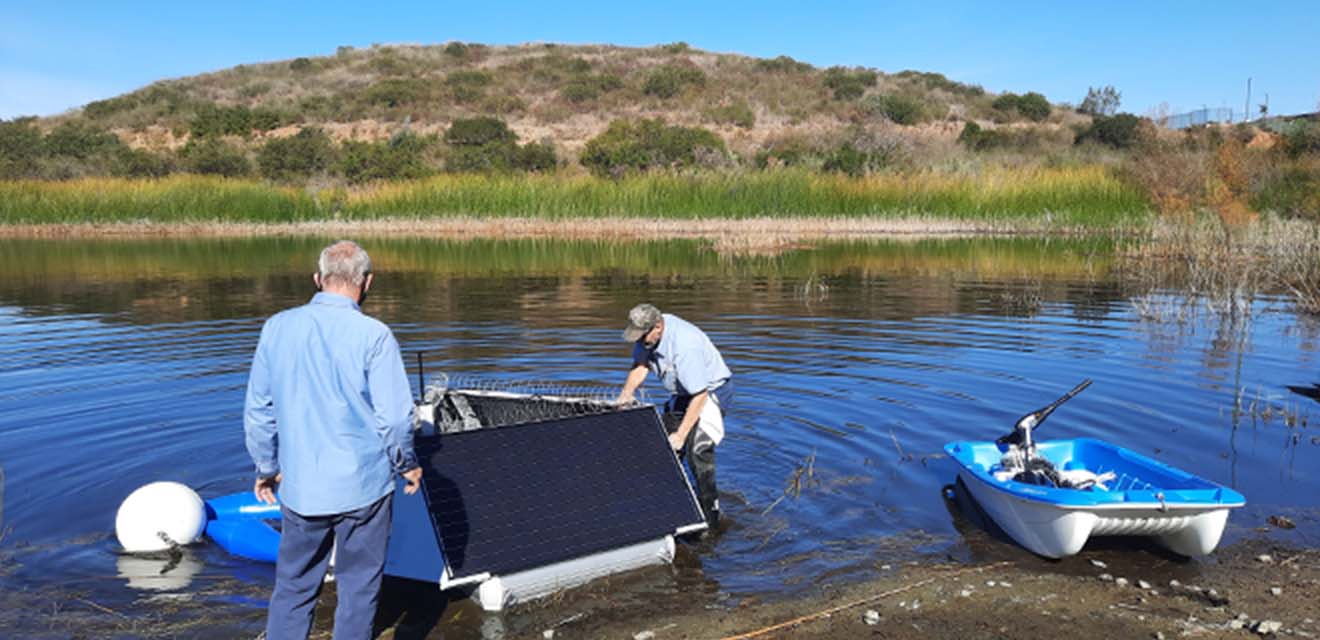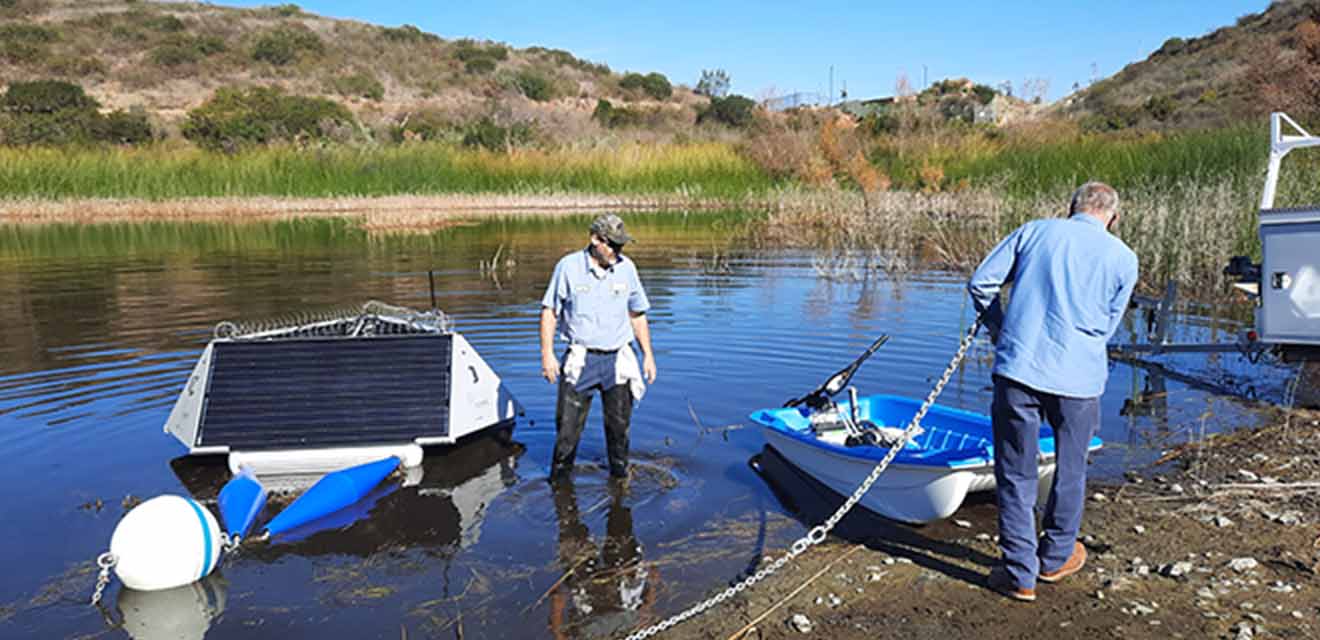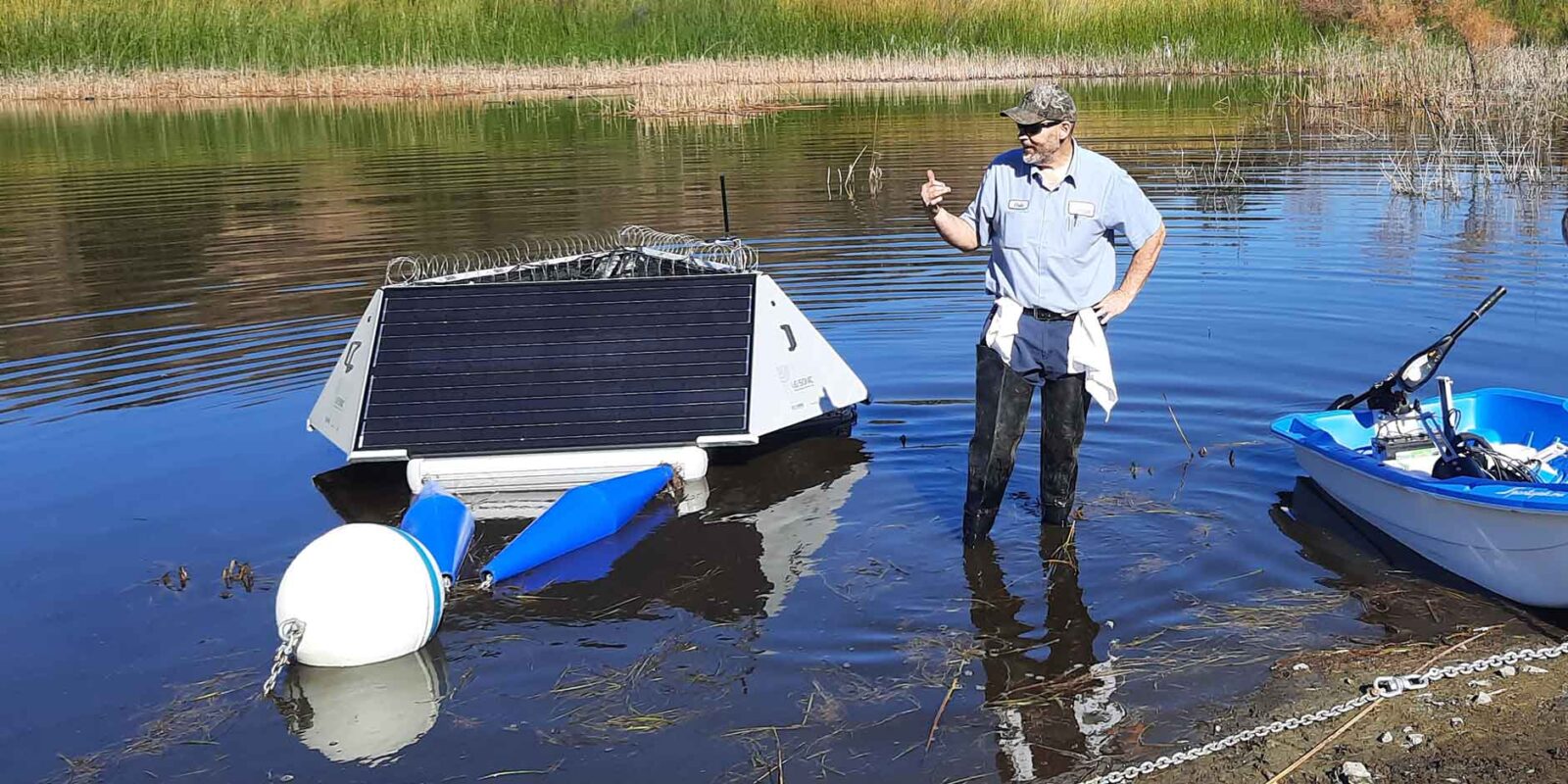In short
- This event marks our second project with the same utility;
- High nutrient load and the region’s year-round sunlight cause algae blooms;
- The installation of an MPC-Buoy only takes 3 simple steps, detailed below.
Our second project with one of the most innovative utilities in western US has kicked off, and this time we want to walk you through every detail of the MPC-Buoy installation. In case you have already read our case study with Vallecitos Water District, you can start reading about the installation here.

The beginning of a second project
In Southern California, Vallecitos Water District is specialized in providing water, wastewater and reclamation services to several areas of San Diego County. As part of its award-winning facilities, the company uses different reservoirs to store reclaimed water. Due to the high nutrient load and the region’s year-round sunlight, these reservoirs are prone to high concentrations of algae.
In order to control algae growth, the utility installed a high-tech buoy in Mahr Reservoir in 2018. The LG Sonic device was successfully implemented and in addition to controlling algal blooms, it has improved TSS, pH, and DO levels. Thanks to these successful results, Vallecitos Water District decided to implement the system in a second reservoir; this time at the South Lake Reservoir.
Adapting to the current circumstances
Each installation marks the beginning of a new project, and LG Sonic’s technical and customer support teams follow each one of them closely. Support may be on-site, however, reduced mobility due to the current health emergency opens up the possibility of remote assistance.
A remote installation is possible with the detailed manual that is delivered with each device, as well as real-time technical support. This was the case for the setting up of the MPC-Buoy equipment at South Lake Reservoir, where Dale Austin (Senior Pump & Motor Tech at Vallecitos Water District) was in charge of leading this operation.
A simple, quick and safe installation
The MPC-Buoy system can be deployed quickly and it’s anchored in the water body. The ultrasonic device’s water quality sensors and ultrasonic transmitters are equipped with the Aquawiper, an automatic system that cleans the sensors after each reading. This way, maintenance is kept to a minimum and readings are always accurate.

The installation of the MPC-Buoy is carefully explained for the convenience of our customers. The steps to put it in place consist of four key actions:
1. The pre-game
Once the equipment is ready, it’s delivered in a compact box with each item necessary for its assembly. It’s necessary to read the installation guide carefully to make sure the purpose of each part and the safety instructions are understood. Likewise, Vallecitos Water District ensured that the installation was carried out in an area with sufficient space and provided protection from environmental conditions such as sun, rain, and wind.
2. Putting all the pieces together
With the assistance of only one other person on-site, Dale Austin assembled the MPC-Buoy for the second time. He built the float and the solar system, which include items such as the solar panels and the protection net.
3. Selecting the right position
The position of the ultrasound equipment is strategically determined based on the shape and size of the water body. LG Sonic’s team maintained direct contact with Dale to secure the best location. Once set, Dale made sure everything was connected properly and attached the equipment to the mooring.
4. The final touch
The most exciting part: the start-up. As a final step, Dale attached the sensors and the ultrasonic transmitters. And finally, he turned on the system. The device was found ready to collect water quality data and apply the right ultrasonic program.
